Daniel Berehulak - Australia's most awarded photojournalist
One of Australia’s most decorated photojournalists, Daniel Berehulak rose from surprisingly humble beginnings. From a hobby farm on Sydney’s western fringes to the Olympics, and eventually the UK as a Getty stringer, Berehulak’s path to success was far from smooth sailing. But with two Pulitzer Prizes and numerous other international accolades under his belt, he is now sitting pretty as one of the country’s most recognised and well-respected visual journalists. Sam Edmonds gets a very special insight.

Australia seems to have some kind of gift producing brilliant photographers from small communities. From the blue-collar suburbs of Newcastle came the messiah himself, Trent Parke, from the banana capital and [then] sleepy, coastal town of Coffs Harbour came whiz kid, Adam Ferguson, and from somewhere in outback Queensland, the late Warren Clarke. No exception to this pattern is Daniel Berehulak.
Hailing from a hobby farm in Camden, west of Sydney, the 43-year-old has cleaned up in recent years with an impressive number of Pulitzer Prizes and World Press Photo awards for his coverage of the Pakistan floods, the Japan tsunami, Ebola, and violence in the Philippines. But Berehulak’s road to success was just as rocky as the next photographer’s. Following the death of his sister early in his career, a newfound passion for life spurred Berehulak to pursue photography keenly. Breaking free of the Sydney sports-shooting ranks, he was quickly discovered by Getty higher-ups in the UK and soon found himself in some of the world’s ugliest disaster zones with a need to confront not only what he saw, but his own ability as a photojournalist. Now recognised as a bastion for insightful and meaningful reportage, Berehulak’s influence as a photographer has skyrocketed. But from his new home in Mexico, he is setting his sights on so much more.
Berehulak is a regular contributor to The New York Times. His work has appeared in TIME Magazine, The Washington Post, The Los Angeles Times, The Wall Street Journal, and The Guardian, amongst others. He’s also a global Panasonic LUMIX ambassador.
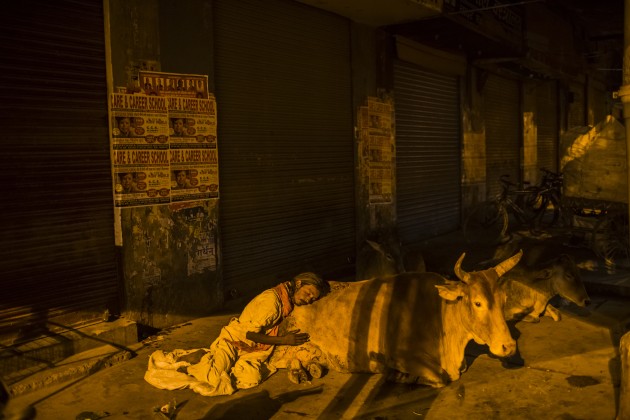
From Camden to Karachi
Born to Ukrainian refugees of World War II and growing up mainly among 500 orange trees and thirty head of cattle just west of Sydney, it would be fair to say that Daniel Berehulak comes from humble beginnings. Attending small local schools before eventually earning a history degree from the University of New South Wales, Berehulak describes growing up in a household where a copy of National Geographic was rarely out of reach. But as the son of parents whose lives were much less than opulent, he admits that while travel was certainly appealing, he never even considered that photography could be the impetus for it. “I really took for granted the images that I saw while growing up. I imagined what life was like on the other side of the world, but photography was something that I didn’t even realise was a profession until I realised that photography was a way of capturing moments and recording history,” he says. “So, going on school excursions and family outings and stuff, I was often taking photos, but never even considering that it would lead anywhere.”
However, during his high school years and into university, a natural talent for volleyball provided Berehulak with an unexpected opportunity to start travelling. Venturing to Indonesia, then further abroad to Lebanon and Germany, Berehulak lugged a camera with him wherever the sport dictated. But on a trip to Europe, when Berehulak and a friend travelled independently to Vienna, the penny finally dropped. “We stumbled across a World Press Photo exhibit,” says Berehulak. “I remember walking in and just being totally blown away by the photographs because in Australia we’re often pretty sheltered from some things that are going on in the world. The images were extremely diverse and showed things that I didn’t necessarily know about.” But while an unexpected exposure to photographs of this calibre certainly provided part of the catalyst for Berehulak’s photographic inspiration, it was closer to home that he found the true motivation to pursue his dream. Not long after his return to Australia, Berehulak learned that his sister was terminally ill. “She had lupus and passed away quite suddenly, so at that point I was like, ‘Fuck this. Life is too short and I’m going to stop doing what I’ve been doing’,” he says. “‘I don’t know how I’m going to get into photography, but I know that I am going to do it.’”
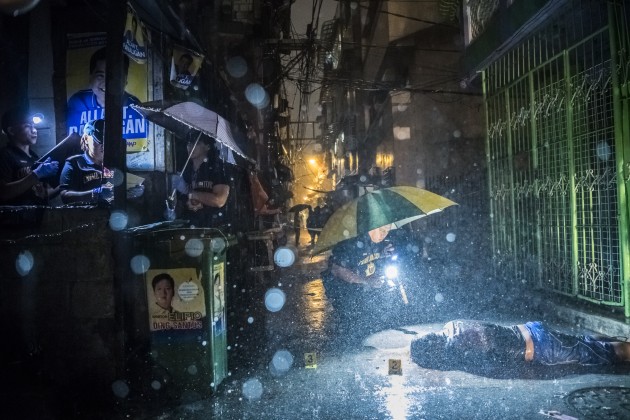
With this motivation behind him, Berehulak turned his sights completely to going pro, and like many smart photographers who are considering their most efficient springboard for entering the industry, he stuck with what he knew: sports photography. Utilising his access to the volleyball scene, Berehulak photographed the tests events for the 2000 Olympics in Sydney and thus set the scene for the next four years of his photographic career: as a Sydney-side sports shooter. But even at this early stage, perhaps drawing on his experience with the World Press exhibition in Vienna, Berehulak remained acutely aware of the broad horizon beyond Australia, and his desire to explore foreign lands. Finally, in 2002, Berehulak made the transition from working at a small agency, (run out of a residential garage in Sydney), to freelancing for Getty. After another two and half years in his home city, he left with the plan to travel around the world and base himself in various places, but on the way to Athens, Berehulak passed through the Getty UK office and they offered him a staff news job in London.
Floods, tsunami, disease
It was here in London that Berehulak began his metamorphosis into a photojournalist. During his time in Sydney, the young photographer had dabbled in covering issues beyond the sports arena, starting to cover bushfires and entertainment, but it wasn’t until he landed in Europe permanently that assignments and features to cover politics, plus the occasional foreign sojourn, began to further shape Berehulak’s understanding of the world both as a photographer and as an individual. Of note among his assignments during this time, Berehulak was tasked with covering the return to Pakistan of Benazir Bhutto from self-exile. “I was on the plane with her and landing in Karachi, greeted by thousands and thousands of people. I had to wade through all the crowds to get the photographs, and then later that day there was a suicide bomb blast,” he says. “That was my first aftermath of something like that. I ended up staying and covering the story for another two weeks or so. Later that year, Bhutto was assassinated. This particular assignment was one of those ones where I really sort of cut my teeth and got to work with a number of amazing photojournalists.”
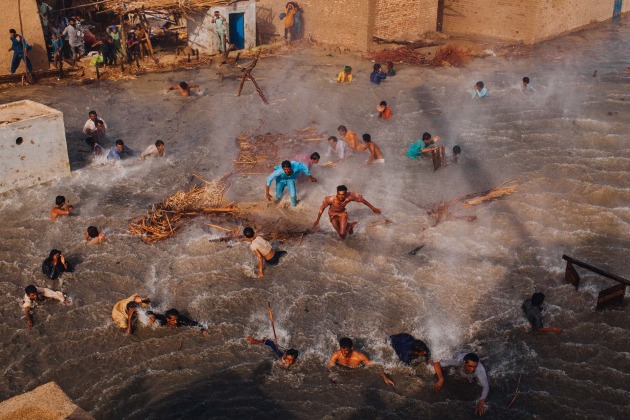
Now, with a taste of such assignments and having caught a glimpse of how important photojournalism could really be, Berehulak returned briefly to England before packing his bags and moving to India – somewhere that he could more easily reach the world’s war-torn areas and more densely populated parts of the continent. During the first year of his time in this region, Berehulak freely admits his naivety as a photojournalist, but as time would tell, his perception for quality storytelling in the face of adversity would develop rather quickly. “I found myself gravitating towards Pakistan and Afghanistan, plus a little further afield to Libya, Egypt, and then Japan for the tsunami aftermath,” he says. “What I experienced was that working for a wire agency you have a limited amount of time to cover a story, and I found that the amount of time that I was getting to cover stories wasn’t doing the stories justice.” So, in 2013, Berehulak made the leap of faith to go freelance and began a relationship with The New York Times out of their bureau office in Kabul – a relationship that afforded him the basis for his now signature in-depth storytelling approach, along with the flexibility to pitch story ideas and pursue leads more freely.
However, it was three years before this that Berehulak learnt, perhaps, his most important lesson as a developing photojournalist when tasked with covering the 2010 Pakistan floods. As one of the region’s most devastating disasters in living memory, Berehulak spent over a month traversing the country documenting the millions of displaced people. His work there would go on to win a World Press Photo award. But despite the mass destruction and suffering that he bore witness to, on this occasion it wasn’t until some time after he left the country that Berehulak learned a rather painful lesson for any budding photographer. “I remember being at the World Press Photo exhibit and one of the editors and another photographer said to me, ‘So, tell me about the background of the people in this shot. Who are they?’ And I just didn’t have an answer,” he recalls. “On that specific day, the driver was 5km away, we had waded through water, it was sunset, and I didn’t have a translator. So, I took this photo that ended up being one of TIME magazine’s Top 10 photos of the year . . . but when I was asked about the subjects, I just didn’t have an answer. From that, I had this overwhelming sense of guilt and shame that I didn’t know the background story of the people in my photos.”
As a way of rectifying this, Berehulak pitched a story to his editors in London: a chance to build upon the one year anniversary of the floods, return to the exact village he has been photographing and to find the subjects of his award-winning image. Armed with little more than the GPS co-ordinates of the site, his editors bought the idea and Berehulak was able to find, interview, and photograph his subjects once more. “For me, that was one of the biggest turning points in my career because I learned that it is not only about the power of the photographs; you need to be a journalist, you need to understand the context of the photograph and who the people are to truly convey the message,” he explains. “Since then, I have really focused on spending time with people, interviewing [them], finding their backstories, and learning as much as I can before
an assignment. The better that I can understand the story, the better that
I can communicate what is going on, and you only get that through time.”

Shot for Panasonic Lumix.
Crisis in West Africa
For many photographers and non-photographers alike, the name Berehulak is probably most synonymous with The New York Times’ coverage of the Ebola crisis. And it was this event that would again prove a pivotal moment for the Australian photographer’s career as his commitment to the coverage of such a catastrophic and horrifying event would set in stone his name as a truly invested photojournalist. And similarly, for Berehulak himself, the event would serve to illustrate the raw power of visual reportage in affecting diplomacy while also revealing a disturbing aspect of the news media industry.
As one of the first Western journalist with boots on the ground in the affected area, it was Berehulak’s name that graced the captions of the first images to emerge from Ebola-infected Africa. And as history would show, it was through these photographs, early on, that most likely mobilised the US government to send forces to West Africa, as prior to that point in time, there was a lot of misunderstanding about the true severity of the situation. “That was my kind of introduction into the real power of photojournalism,” Berehulak says. “I was getting e-mails from people around the world who didn’t necessarily understand the situation, but were learning from our photographs and from our reporting. It is hard for us to quantify the impact that we have had as photojournalists, but that was an assignment that has had a direct correlation.”

have the body removed.
In hindsight, it would seem, from the outside, that this recognition would have an immediate and drastic impact on Berehulak’s own sense of the importance of his role as a photojournalist. As his images of Ebola began to appear on more and more front pages of newspapers around the world, a direct correlation with the medical and diplomatic response in the region became evident. “We talk a lot about empathy and wanting to get people to stop and think, and maybe even act, after they see a photograph, and this was one assignment where you did see a direct impact,” Berehulak says, going on to describe the case of a Swiss woman who contacted him directly and donated 10,000 euros to the family of a young Ebola victim. Evidently, these events would serve to immensely fan the flames of Berehulak’s investment in quality storytelling. He went on to spend a total of 103 days covering the crisis for the Times. “At one stage, I was about two months in and I was so mentally and physically exhausted. I remember going back to my apartment in Delhi and I was meant to have couple of weeks off, but I sat down on the couch, just sat there, and within an hour I was like, ‘What am I doing here? This is
still far from being over, and who am I to start taking time off?’” he says. “I just felt an urgency to get back out there, so I called my editor, and that night I flew back out from Delhi to Brussels to Liberia. So often you feel this compulsion to be there, to be covering the story, and that was certainly one of those [moments] for me.”
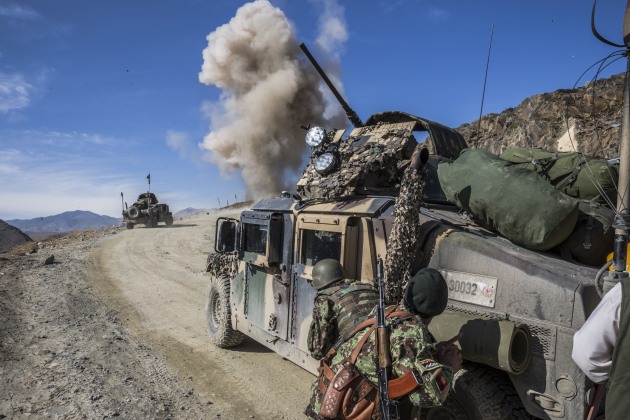
Shot for The New York Times.
In addition to the coverage that Berehulak felt the situation warranted, a worrying trend among his fellow journalists that emerged on the scene further impacted his sense of responsibility when covering the event as thoroughly as respectfully as possible. As a situation that clearly held potentially disastrous effects, not only for Africa, but for the rest of the world, Ebola was an episode that would go on to attract hundreds of freelance photographers who attempted to cover the story. However, as Berehulak recalls, the commitment of most was far from the ideal. “CNN were coming out for like 4 or 5 days and would send a local Liberian cameraman to get the footage, while they themselves were reporting from a restaurant very safely, very far away, but claiming that they were on the front lines of Ebola,” he recounts. “So, I really saw a lack of dedication to journalism and I therefore felt more of a responsibility because I had this opportunity to be there and to report. I felt it was what I needed to do because every day there was something happening, and if you’re not there and you’re not photographing, so many stories are not being documented.”
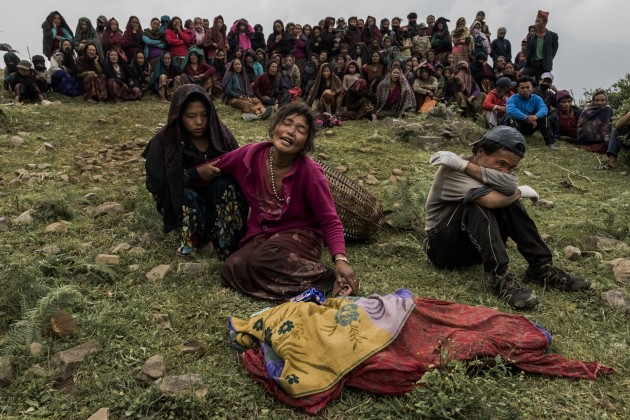
El futuro
Having covered some of the most devastating and impactful events of the 21st century across his career already, Daniel Berehulak is continuing to prove himself, not only as one of Australia’s most celebrated photographic exports, but as one of modern photography’s most renowned visual journalists. But as an Australian, Berehulak now falls well within the league of those Antipodean exports residing almost entirely in the northern hemisphere, always far from home. When asked if a Ferguson-esque pilgrimage to his homeland was on the horizon, Berehulak again tacitly admitted to his unwavering sense of duty and commitment to documenting the world’s regions most in need of visual reportage. From his home in Mexico, the now fluent Spanish speaker reminisced of his [Australian] home, and his desire for time with family, but also spoke at length about the need to bear witness in the Central American region. Clearly, like many of Australia’s now extensive line up of stellar photojournalistic exports, a deep-seated and intrinsic sense of the need to bear witness keeps Berehulak with a camera in one hand and on planes to some of the planet’s areas in most dire need. And perhaps still propelled by his sister’s encouragement, there seems to be no stopping the kid from Camden.

Contact
Daniel Berehulak

Get more stories like this delivered
free to your inbox. Sign up here.

